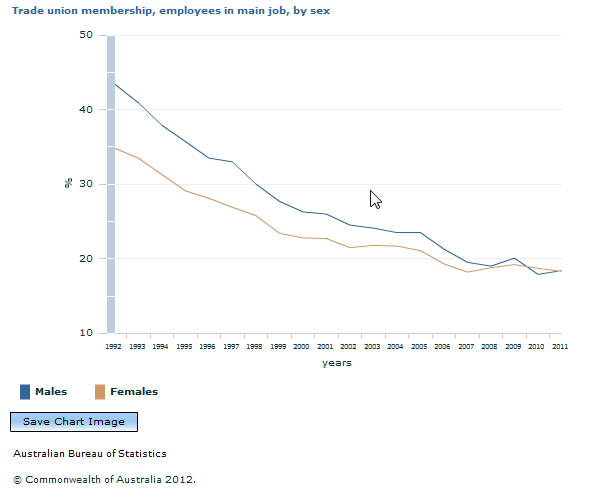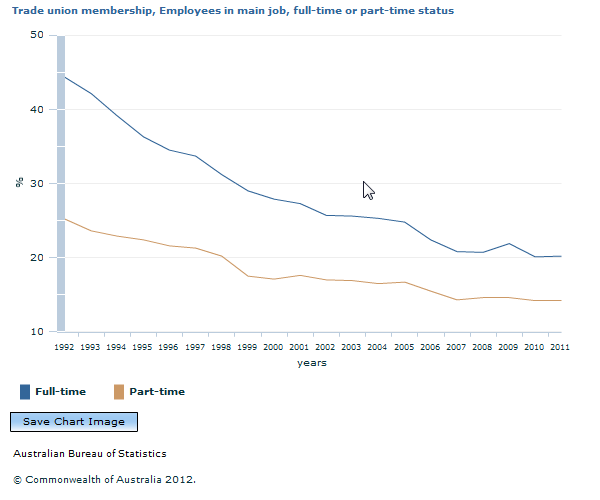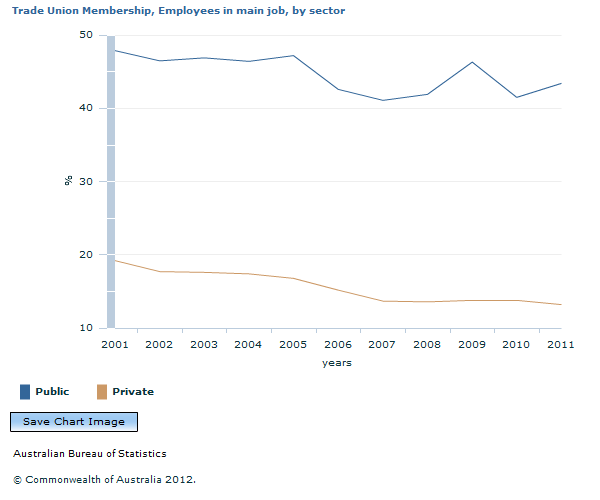6310.0 - Employee Earnings, Benefits and Trade Union Membership, Australia, August 2011  Quality Declaration
Quality Declaration
ARCHIVED ISSUE Released at 11:30 AM (CANBERRA TIME) 27/04/2012
Page tools:
 Print Page Print Page
 Print All Print All
| ||
|
OVERVIEW Trade union membership has generally declined since 1992. From August 1992 to August 2011, the proportion of those who were trade union members in their main job has fallen from 43% to 18% for employees who were males and 35% to 18% for females. There was, however, a small rise in trade union membership during the Global Financial Crisis (GFC) period (2008-2009). This was largely driven by an increase in the proportion of male employees who were trade union members which was 19% in August 2008 and 20% in August 2009.  Looking at full-time and part-time employees during this same period, the data show a rise in membership for full-time employees during the GFC. The proportion of full-time employees was 20.7% in 2008 and 21.9% in 2009. Trade union membership for part-time workers remained steady at 15% during the same period.  Of persons who were a member of a trade union in their main job, those employed in the private sector saw an almost 9% decrease overall from 1.2 million in 2001 to 1.1 million in 2011. This sector however, has seen a rise of 10% since 2007, after reaching a decade low of just under 1 million persons.  Following the GFC (from August 2009 to present), there has been a decrease in the proportion of those who were trade union members in their main job to 18% in August 2011, the lowest proportion of trade union membership collected by the ABS. Document Selection These documents will be presented in a new window.
|
|
